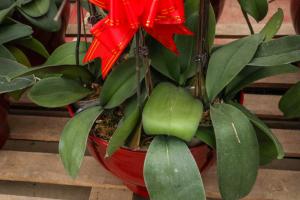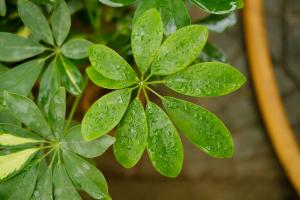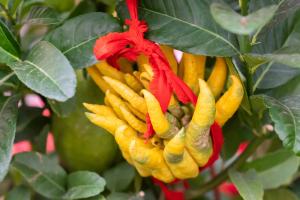Colorful taro: overwintering starts in September
From September, the leaves of colorful taro will gradually begin to turn yellow. This is a normal phenomenon. Don't worry. Gradually, the leaves will wilt and droop. At this time, it is necessary to control watering and stop fertilization. When all the leaves wither, take out the tubers in a basin, put them in a well lit, ventilated and dry environment for 10 days, and then store them. Store it in sterilized dry sand (keep the sand dry, damp and easy to rot tubers), and control the temperature between 10 ~ 20 ℃ (it is easy to be frozen if the temperature is lower than 10 ℃, and hibernation will be broken if it is higher than 22 ℃). Keep the sand surface slightly wet every half a month. When digging tubers, handle them gently to avoid damaging the root and affecting the growth of the next year

Colorful taro: tuber storage
In fact, the focus of winter maintenance lies in the storage of tubers. There are two main methods. One is that the tubers are stored face up and can germinate rapidly when sowing in spring. The disadvantage is that the growth of the whole year is uneven and the main buds grow vigorously, but other small buds are uneven. Second, the back of the tuber is planted upside down. Although the germination will be slower, it will germinate more, and the growth of each bud is more balanced

Colorful taro: replay in spring
In the early spring of the next year, the tubers were taken out and cut. Or break off the small buds propagated around and plant them directly, but each segmented tuber must have at least one bud, and coat the cut with grass charcoal or furnace ash for anti-corrosion. The basin soil is mixed with rotten leaf soil with rotten chicken manure and bone powder, poured with enough water and placed in the shade. After emergence, it is moved to the semi shade for maintenance, and pay attention to maintaining the surrounding air humidity

 how many times do yo...
how many times do yo... how many planted tre...
how many planted tre... how many pine trees ...
how many pine trees ... how many pecan trees...
how many pecan trees... how many plants comp...
how many plants comp... how many plants can ...
how many plants can ... how many plants and ...
how many plants and ... how many pepper plan...
how many pepper plan...































